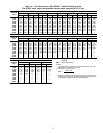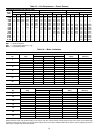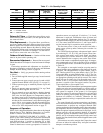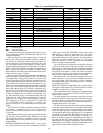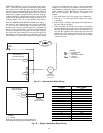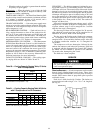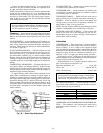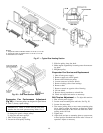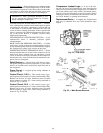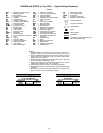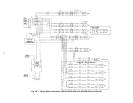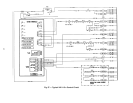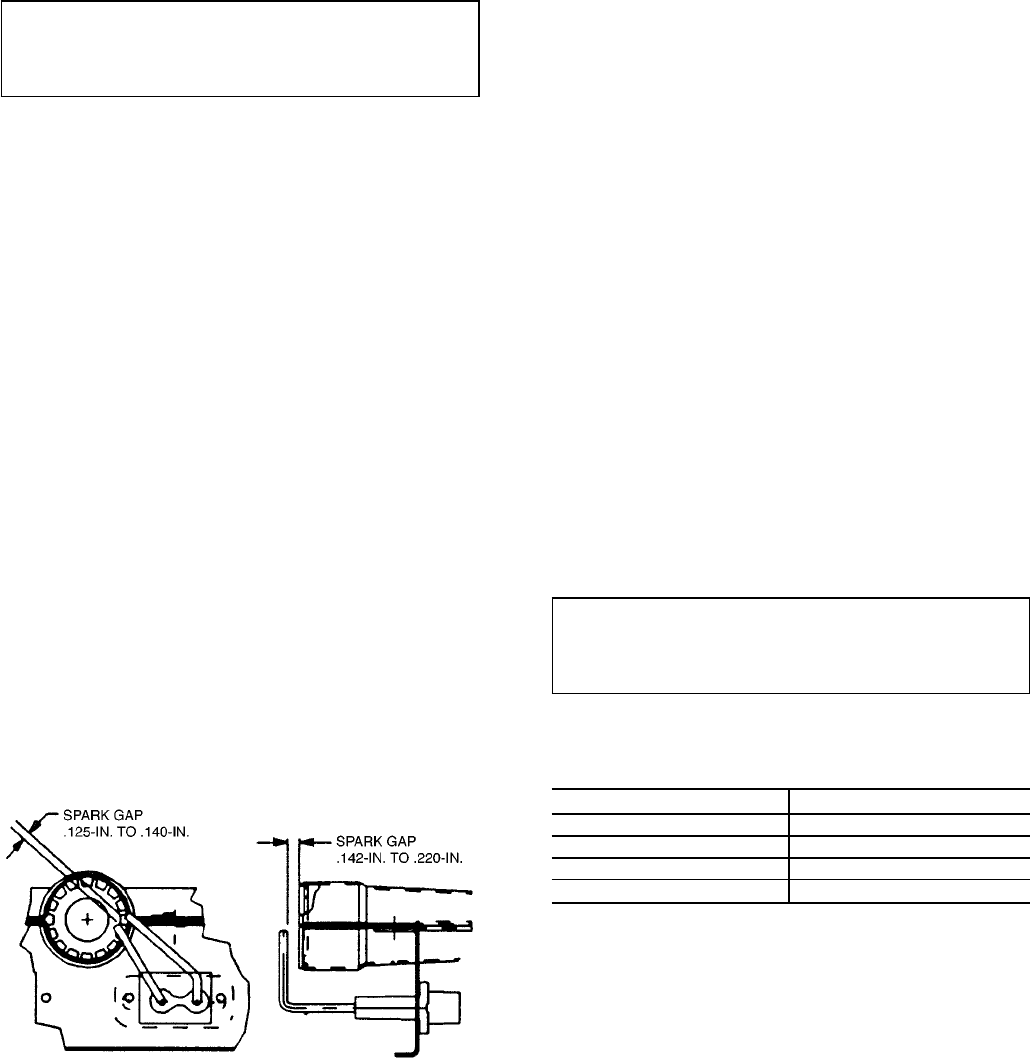
To open, loosen the latch bolt using a
7
⁄
16
-in. wrench. Pivot
the latch so it is not in contact with the door. Open the door.
To shut, reverse the above procedure.
NOTE: Disassembly of the top cover may be required under
special service circumstances. It is very important that the
orientation and position of the top cover be marked on the
unit prior to disassembly. This will allow proper replace-
ment of the top cover onto the unit and prevent rainwater
from leaking into the unit.
IMPORTANT:After servicing is completed, make sure
door is closedand relatched properly, and that thelatches
are tight. Failure to do so can result in water leakage
into the evaporator section of the unit.
Cleaning — Inspect unit interior at beginning of each heat-
ing and cooling season and as operating conditions require.
Remove unit side panels and/or open doors for access to unit
interior.
MAIN BURNERS — At the beginning of each heating sea-
son, inspect for deterioration or blockage due to corrosion or
other causes. Observe the main burner flames and adjust if
necessary. Check spark gap. See Fig. 46. Refer to Main Burn-
ers section on page 48.
FLUE GAS PASSAGEWAYS — The flue collector box and
heat exchanger cells may be inspected by removing gas sec-
tion access panel (Fig. 3-6), flue box cover, collector box,
and main burner assembly (Fig. 47 and 48). Refer to Main
Burners section on page 48 for burner removal sequence. If
cleaning is required, clean all parts with a wire brush. Re-
assemble using new cerafelt high-temperature insulation for
sealing.
COMBUSTION-AIR BLOWER — Clean periodically to as-
sure proper airflow and heating efficiency. Inspect blower
wheel every fall and periodically during heating season. For
the first heating season, inspect blower wheel bi-monthly to
determine proper cleaning frequency.
To inspect blower wheel, remove heat exchanger access
panel. Shine a flashlight into opening to inspect wheel. If
cleaning is required, remove motor and wheel assembly by
removing screws holding motor mounting plate to top of com-
bustion fan housing (Fig. 47 and 48). The motor, scroll, and
wheel assembly can be removed from the unit. Remove scroll
from plate. Remove the blower wheel from the motor shaft
and clean with a detergent or solvent. Replace motor and
wheel assembly.
EVAPORATOR COIL — Remove access panels and clean
as required with commercial coil cleaner.
CONDENSER COIL — Clean condenser coil annually and
as required by location and outdoor-air conditions. Inspect
coil monthly; clean as required.
CONDENSATE DRAIN — Check and clean each year at
start of cooling season. In winter, keep drains and traps dry.
FILTERS — Clean or replace at start of each heating and
cooling season, or more often if operating conditions re-
quire. Refer to Table 1 for type and size.
NOTE: The unit requires industrial grade throwaway filters
capable of withstanding face velocities up to 625 fpm.
OUTDOOR-AIR INLET SCREENS — Clean screens with
steam or hot water and a mild detergent. Do not use dis-
posable filters in place of screens. See Fig. 24 for location of
screens (filter track assembly).
Lubrication
COMPRESSORS — Each compressor is charged with the
correct amount of oil at the factory. The correct oil charge is
shown in Table 1. If oil is visible in the compressor sight
glass, check unit for operating readinessas described inStart-Up
section, then start the unit. Observe oil level and add oil, if
required, to bring oil level in compressor crankcase up to
between
1
⁄
4
and
1
⁄
3
of sight glass during steady operation.
If oil charge is above
1
⁄
3
sight glass, do not remove any oil
until the compressor crankcase heater has been energized for
at least 24 hours with compressor off.
When additional oil or a complete charge is required, use
only Carrier-approved compressor oil:
Petroleum Specialties, Inc. .................Cryol 150
Texaco, Inc. .........................Capella WF-32
Witco Chemical Corp. ...................Suniso 3GS
IMPORTANT: Do not use reclaimed oil or oil that has
been exposed to the atmosphere. Refer to Carrier Stand-
ard Service Techniques Manual, Chapter 1, Refriger-
ants section, for procedures to add or remove oil.
FAN SHAFT BEARINGS — Lubricate bearings at least ev-
ery 6 months with suitable bearing grease. Do not over grease.
Typical lubricants are given below:
MANUFACTURER LUBRICANT
Texaco Regal AFB-2*
Mobil Mobilplex EP No. 1
Sunoco Prestige 42
Texaco Multifak 2
*Preferred lubricant because it contains rust and oxidation inhibitors.
CONDENSER-AND EVAPORATOR-FAN MOTOR BEAR-
INGS — The condenser- and evaporator-fan motors have
permanently-sealed bearings, so no field lubrication is
necessary.
Fig. 46 — Spark Gap Adjustment
45



